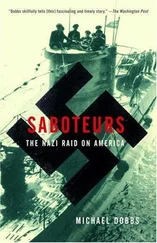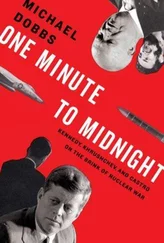“My opinion is that in this situation we must show firmness and remain cool,” the defense minister barked. “We should not flinch. If we flinch, it gives all kinds of people the opportunity to overfly our territory.”
The only Politburo member who might have had the authority to stand up to Ustinov was Andrei Gromyko, who would be required to bear the brunt of international outrage over the shooting down of a civilian airliner. But the seventy-four-year-old foreign minister was exceptionally cautious. This survivor of Stalin’s purges had managed to climb to the top by always backing the winning side. Every gene in his body told him not to get into an argument with someone as forceful as Ustinov. If he judged that the timing was right, “Grim Grom” could be an effective advocate for arms control negotiations with the United States in internal Politburo discussions. Faced with a choice between antagonizing the military and abandoning policy positions favored by the Foreign Ministry, he almost always chose the latter. He did not want his ministry to acquire a dovish reputation. 21
Gromyko told the Politburo that the Soviet military had acted “correctly” in shooting down the Korean plane. At the same time, he believed that the Soviet Union should anticipate the likely thrust of “imperialist propaganda” and acknowledge that “shots were fired.” “We should say so frankly, so as not to allow our adversary to accuse us of being deceitful. Our main argument should be that the plane was flying over Soviet territory and had penetrated an exceptionally long way into our territory.”
Now it was Mikhail Gorbachev’s turn to speak. The youngest member of the Politburo was in a delicate position. Everyone knew he was a favorite of Andropov, who had encouraged him to broaden his range of interests beyond agriculture. His elders needed his youthful energy and competence, but they also felt threatened by him. Here was a man who could push them all aside. In order to retain their confidence and have a shot at the top job, Gorbachev had to tread a very fine line. He had to prove that he could be an enthusiastic and creative spokesman for the party without threatening the vested interests of any section of the Soviet bureaucracy.
Gorbachev resorted to the standard stratagem of Kremlin politics: When in doubt, attack the “forces of imperialism.” He told his colleagues that the Americans must have been aware of the unauthorized incursion into Soviet territory. The length of time that the Korean plane had been in Soviet airspace, some two hours, showed that this was a well-planned “provocation.”
“It’s no use keeping quiet now; we must go on to the offensive,” he concluded, striking a hawkish note.
That evening, in keeping with Andropov’s declared intention of introducing greater “openness” into political life, the Soviet people were informed that the Politburo had met. A communiqué read out on the main television news bulletin said that the subjects under discussion included “improving the production of color television sets” and measures “to increase labor productivity.” 22There was no mention of the KAL tragedy. It took another five days for the Soviet authorities to acknowledge that they had indeed shot down a civilian airliner. On September 10 the Kremlin moved over to the offensive, just as Gorbachev had proposed, broadcasting a television interview with the man who had blasted the Korean airliner out of the sky.
GENNADY OSIPOVICH WAS SHOCKED and bewildered. He tried hard to conceal his feelings, but his mental anguish was apparent to anyone who met him. His normally firm handshake was cold and lifeless. His expression seemed hopelessly distracted. He behaved like someone suffering from an attack of nausea or perhaps a merciless tongue-lashing from a superior. Wrapped up in his own world, he seemed to tune out of a conversation and gaze off into the distance.
“Perhaps there was no one on the plane,” he would say to no one in particular. Or, “Who can tell me exactly how many seats there are on this Boeing?” 23
The pilot’s world had turned upside down several times in the space of a few days. When he brought his Su-15 back to Sokol Air Base, he was greeted like a hero. The entire regiment turned out to welcome the man who had shot down an “intruder.” There were hugs, kisses, and celebratory shots of vodka. The younger pilots looked at him with envy, but Osipovich felt a twinge of anxiety. He phoned Kornukov, the general who had given the order to “destroy the target,” to find out what had really happened. Perhaps the plane had been “one of ours”?
“No,” the general had replied in his gruff tone. “It was a foreigner. So make a hole in your shoulder boards for a new star.” 24
Then the rumors started. Western radio stations reported that the Soviet Union had shot down a passenger airplane, with 269 people on board. Government commissions arrived from Moscow. There were endless questions and investigations. The higher-ups, trained in the art of playing it safe, began to look strangely at Osipovich.
“Why are they treating me as if I am insane?” the pilot complained to a journalist for the army newspaper Red Star , who had flown in to interview him. “For days I have not even been able to go to the bathroom by myself. They keep me locked up.” 25
The journalists had been fully briefed before leaving Moscow. Their task was to get the interceptor pilot to confirm the official propaganda line about downing a “spy plane.” That meant mouthing the same lies that the Soviet Union had been telling the rest of the world. The entire script had already been written in Moscow. All Osipovich was required to do was to memorize his lines and repeat them in front of the camera. He did as instructed, but the result seemed hopelessly artificial and wooden. The television correspondent was dissatisfied
The pilot asked for a break. Someone produced a bottle of vodka, which he downed in a succession of quick shots. He felt more relaxed now. When he reappeared in front of the television cameras, the words of outrage and indignation seemed to come spontaneously. He spoke about the threat of a nuclear war, describing how he had been scheduled to give a talk on “peace” to a school in Sakhalin on the very day that the United States organized its provocation. The television reporter, Aleksandr Tikhomirov, asked if he was certain that the intruder had been an “enemy plane.”
“Yes, this is what I thought,” replied Osipovich, slouching in an easy chair. “After it crossed our border, it only made me more certain. This enemy aircraft which had broken into our territory was now flying over my home. It passed almost over our base. People at this time are peacefully sleeping, and he’s up there on a spying mission.” 26
THE KOREAN AIRLINER TRAGEDY was a cathartic experience for both superpowers. It brought them closer to nuclear Armageddon than at any time since the 1962 Cuban missile crisis, but it also laid the psychological foundation for a new era in East-West relations. Like punch-drunk fighters clutched in a deadly embrace, the leaders of Russia and America staggered to the edge of a cliff, looked over the edge, and then took a step back.
Hearing the rhetorical missiles hurtling back and forth between Moscow and Washington, one could be forgiven for concluding that the world was on the edge of an abyss. The Reagan administration accused the Kremlin of “a crime against humanity” and the deliberate “massacre” of 269 innocent civilians. The Soviets responded by depicting Reagan as a “madman,” comparable to Adolf Hitler, who wanted to dominate the world. At the same time, however, there was a reassuring predictability about these barbs. It was as if each side knew that it possessed the means to inflict unacceptable devastation on its rival and was therefore compelled to find other ways of giving vent to its hostility. The balance of terror was matched by a balance of rhetoric.
Читать дальше












